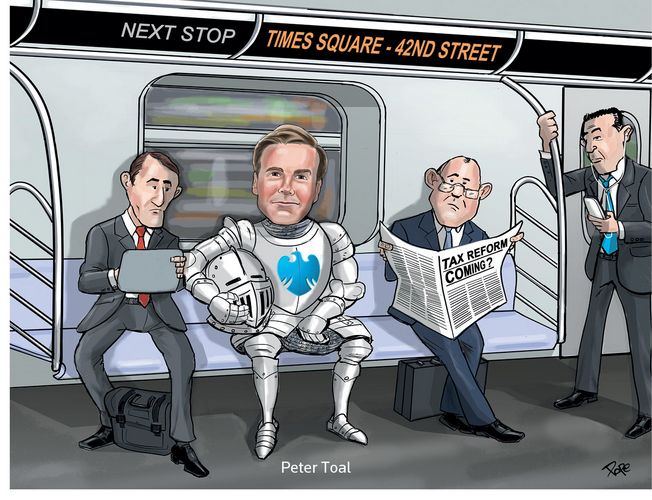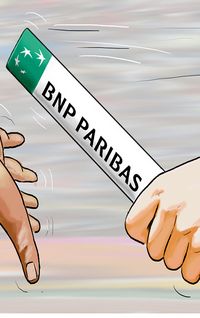Going into battle
The first year of the Trump presidency brought a great deal of uncertainty to the US high-yield market. For striking the right balance between sponsor and corporate clients while delivering dependable advice and execution, Barclays is IFR’s North America High-Yield Bond House of the Year.
The past year provided few excitements for leveraged finance bankers.
Buyout and M&A activity remained subdued as high valuations kept sponsors at bay and uncertainty about tax reform made corporate boards more hesitant to consider big acquisitions.
As US junk-bond spreads continued to grind tighter – approaching post-crisis tights – refinancing dominated new issue activity once again, accounting for nearly two-thirds of total supply.
Banks that historically relied on LBOs and corporate M&A to fuel their leveraged finance business were forced into aggressive underwritings to out-punch competitors.
While the gorillas with an undisputed leadership in the corporate world saw themselves propelled to new highs in the league tables with seemingly little effort, truly shining in 2017 required a careful balance between chasing the few event-driven deals and leveraging corporate relationships to get as large a slice as possible of the refinancing pie.
Barclays performed on both fronts and delivered strong execution for issuers regardless of ratings, sponsorship and use of proceeds.
It maintained a strong market share in sponsor-led transactions, leading bond sales for Blackstone’s acquisition of healthcare staffing company Team Health as well as for the combination of Brand – an infrastructure services company owned by Clayton Dubilier & Rice – and Safway, among the others.
At the same time, it led refinancing deals for some of the largest – and best banked – issuers in the US high-yield market, including Valeant Pharmaceuticals International and Tenet Healthcare.
“The fact that we spent the last couple of years building brick-by-brick better and more corporate relationships … has allowed us to build what is in effect a very diversified business,” said Peter Toal, global head of leveraged finance syndicate at the bank.
“Years ago, we may in fact have been probably too dependent on the sponsor community and LBO business.”
And while Toal says private equity firms remain critical for the bank, the focus on corporate transactions certainly paid off.
Barclays was lead-left on the largest refinancing in the US high-yield market, a US$3.78bn three-part bond sale for Tenet Healthcare. It has now led every bond sale for Tenet since 2015.
The well-executed refinancing took place in a year of heightened volatility for the healthcare industry as stop-and-go efforts in Washington to reform the sector threatened to leave hospitals footing the bill for a growing number of uninsured patients.
Barclays also led the first bond sale in two years for embattled speciality pharmaceutical company Valeant, a former darling of the US high-yield market.
Still reeling from a 2015 scandal over its pricing practices and relationship with a speciality pharmacy, the Canadian company has been selling assets to trim its massive debt load and was finally able to return to the primary market in March.
Barclays was lead-left on the two-part offering, which was upsized to US$3.25bn from the US$2.5bn initially targeted and was part of a bigger US$11.7bn refinancing and credit facility amendment entirely led by the bank.
“It was a must-do for the company in terms of giving it its runway for maturity extension and more importantly the covenant relief,” said John Skrobe, co-head of Americas leveraged finance at Barclays.
The deal opened the door for two more bond issues from Valeant later in the year – one led by Citigroup and one led again by Barclays.
In a year when investors remained selective and often pushed back on aggressive terms or tight pricing, Barclays also demonstrated its strong ability to read – and time – the market.
While it was occasionally on the right of trades that had a difficult execution (including a bond sale for West that was priced through its cap rate), no deal where Barclays was lead-left was ever pulled or even priced significantly wider than talk during the year.
“We put our helmet on and go into battle every morning,” said Toal. “We do what we say we are going to do.”
To see the digital version of this review, please click here.
To purchase printed copies or a PDF of this review, please email gloria.balbastro@tr.com.



